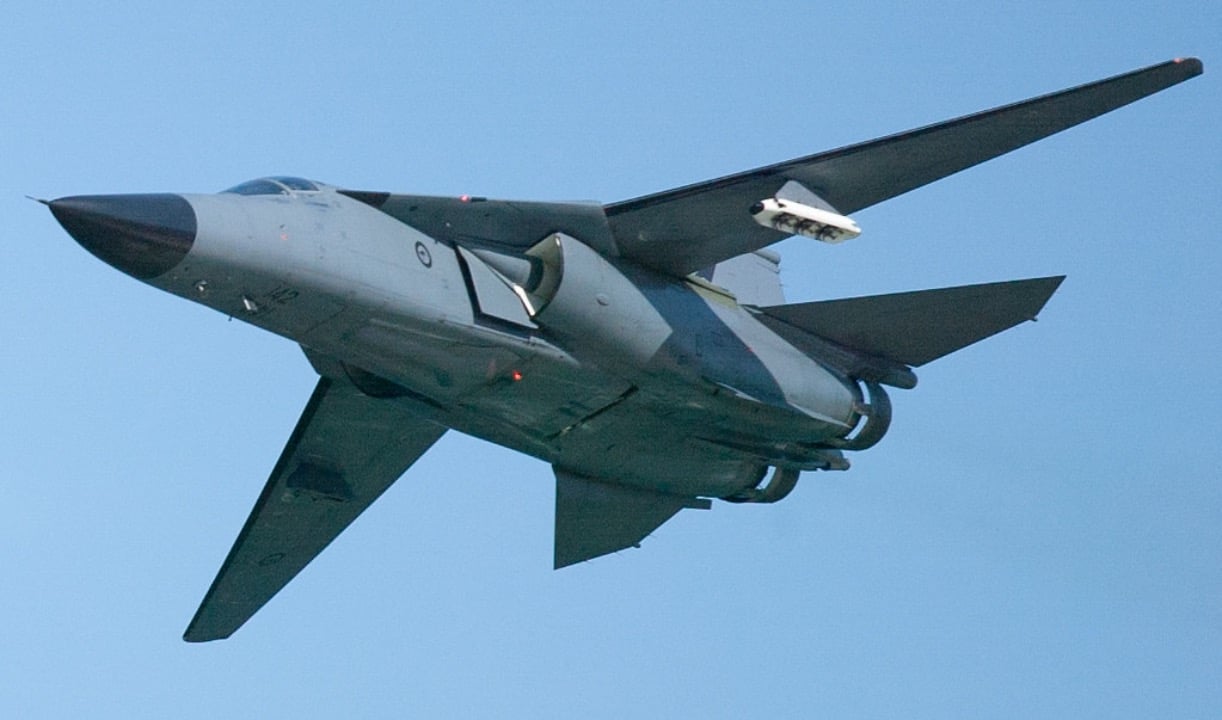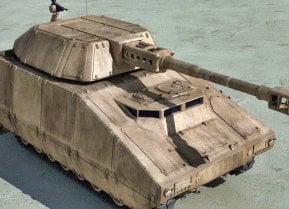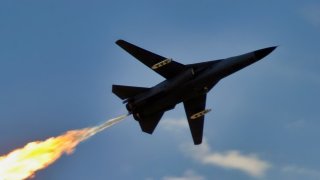F-111 Aardvark: A Mesmerizing Strike Aircraft or Waste of Money?
The F-111 Aardvark was a strike aircraft with a clear history of taking on tough challenges on the ground. But was it overrated overall?
F-111 Aardvark - What Made This Strike Aircraft Such a Legend: The F-111 may have been relegated to retirement more than two decades ago, but its legacy remains in the aviation space today.
When the F-11 “Aardvark” entered service with the U.S. Air Force back in 1964, it became the first tactical aircraft to cross the Atlantic from America to Europe without refueling. This supersonic, medium-range, multi-role fighter could perform various functions, including attack, reconnaissance, strategic bombing, and even electronic warfare.
While the warplane on paper was quite formidable, several design flaws led to its relatively early retirement.
A brief history of the F-111 Aardvark:
When an American U-2 reconnaissance plane was shot down over the former USSR in 1960, Cold War tensions skyrocketed.
At this time, the U.S. gained the knowledge that the Soviets possessed more advanced surface-to-air missile that could reach higher targets.
This incident demonstrated that the U.S. required a long-range interdiction/strike platform that would be equipped to penetrate Soviet air defenses at high speeds and low altitudes.
Shortly after this incident, then-Secretary of Defense Robert McNamara established the Tactical Fighter Experimental (TFX) program to create a singular airframe that could meet the needs of both the Navy and Air Force at the time. Big-name manufacturers like Boeing, Lockheed Martin, General Dynamics, and McDonnell Douglas submitted proposals.
Ultimately, Boeing and General Dynamics were selected to submit design proposals. The winning proposal would later become the General Dynamics F-111 Aardvark. The airframe’s pioneered variable-sweep wings, after-burning turbofan engines, and automated terrain-following radar were just some of its enhancements.
By the time the Aardvark entered service with the Air Force in 1967, the Royal Australian Air Force also ordered this fighter and would begin operating the F-111 by the early 1970’s. The RAAF then remained the sole operator of the Aardvark with 21 aircraft until their retirement in 2010.
A few years prior, the Australian government decided to replace all of its Aardvark fighters with the F/A-18F Super Hornet.
The F-111 is powered by two Pratt & Whitney TF30 afterburning turbofan engines. In fact, this airframe would become the first of its kind to use an afterburning turbofan engine, which enabled it to fly longer distances without the need for refueling. Two F-111 variants were designed for the Navy and Air Force. The USAF’s F-111A featured AN/APQ-110 terrain-following radar, air-to-ground armament, and AN/APQ-113 attack radar. The Navy’s F-111B could carry an AN/AWG-9 Pulse-Doppler radar and six AIM-54 Phoenix missiles.
F-111 Armament
All F-111 variants were equipped with air-to-surface ordnance for the long-range attack. As detailed by Air Force Technology, the internal weapons pay positioned under the fuselage could carry various weapons, from the M61 Vulcan 20mm cannon to the Mk 117 bombs.
Additionally, the Aardvark could sport free-fall nuclear weapons like the B57 and B61 bombs. The F-111C variant, procured by Australia, could launch AGM-142 Popeye stand-off missiles and AGM-84 Harpoon anti-ship missiles.
Operational-history:
The F-111 Aardvark was first deployed to the Vietnam War in the late 1960’s. Throughout its operational history here, 55 missions were flown in North Vietnam, where two airframes were lost. While the cause of the losses was unknown, a third Aardvark loss was later traced back to a failure of a hydraulic control-valve rod for the horizontal stabilizer, which forced the plane to pitch up uncontrollably. It was soon determined that at least 40 F-111s possessed the same potential failures.

In 1986, eighteen Aardvarks were deployed during the Operation El Dorado Canyon airstrikes on Libya. Alongside four EF-111A Raven electronic warfare variants, the Aardvarks flew round trip from the United Kingdom to Libya - a distance of 6,400 miles spanning 13 hours. This flight represented the longest fighter combat mission in history. Just a few years later, during Operation Desert Storm, the F-111F proved to be one of the most effective allied airframes of the war.
By 1996, the U.S. would retire its last remaining F-111 Aardvarks to make way for the arrival of the F-15E Strike Eagle for medium-range precision strike missions. The F-111’s supersonic bomber role was also taken over, this time by the B-1B Lancer.
About the Author
Maya Carlin is an analyst with the Center for Security Policy and a former Anna Sobol Levy Fellow at IDC Herzliya in Israel. She has by-lines in many publications, including The National Interest, Jerusalem Post, and Times of Israel. You can follow her on Twitter: @MayaCarlin.
All images are Creative Commons.


